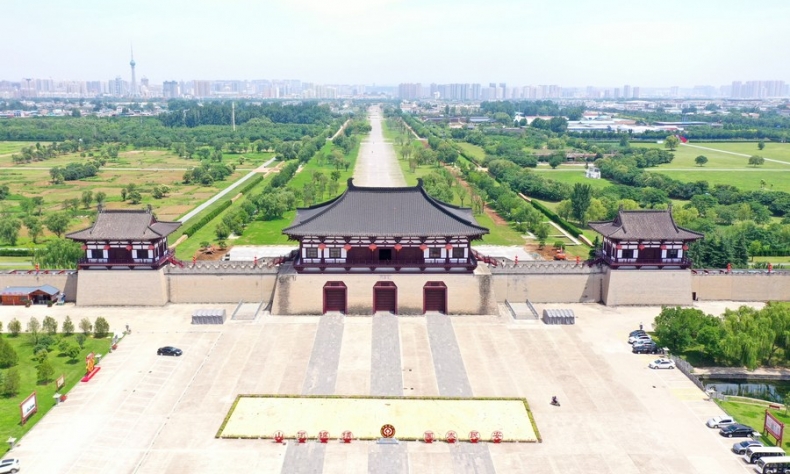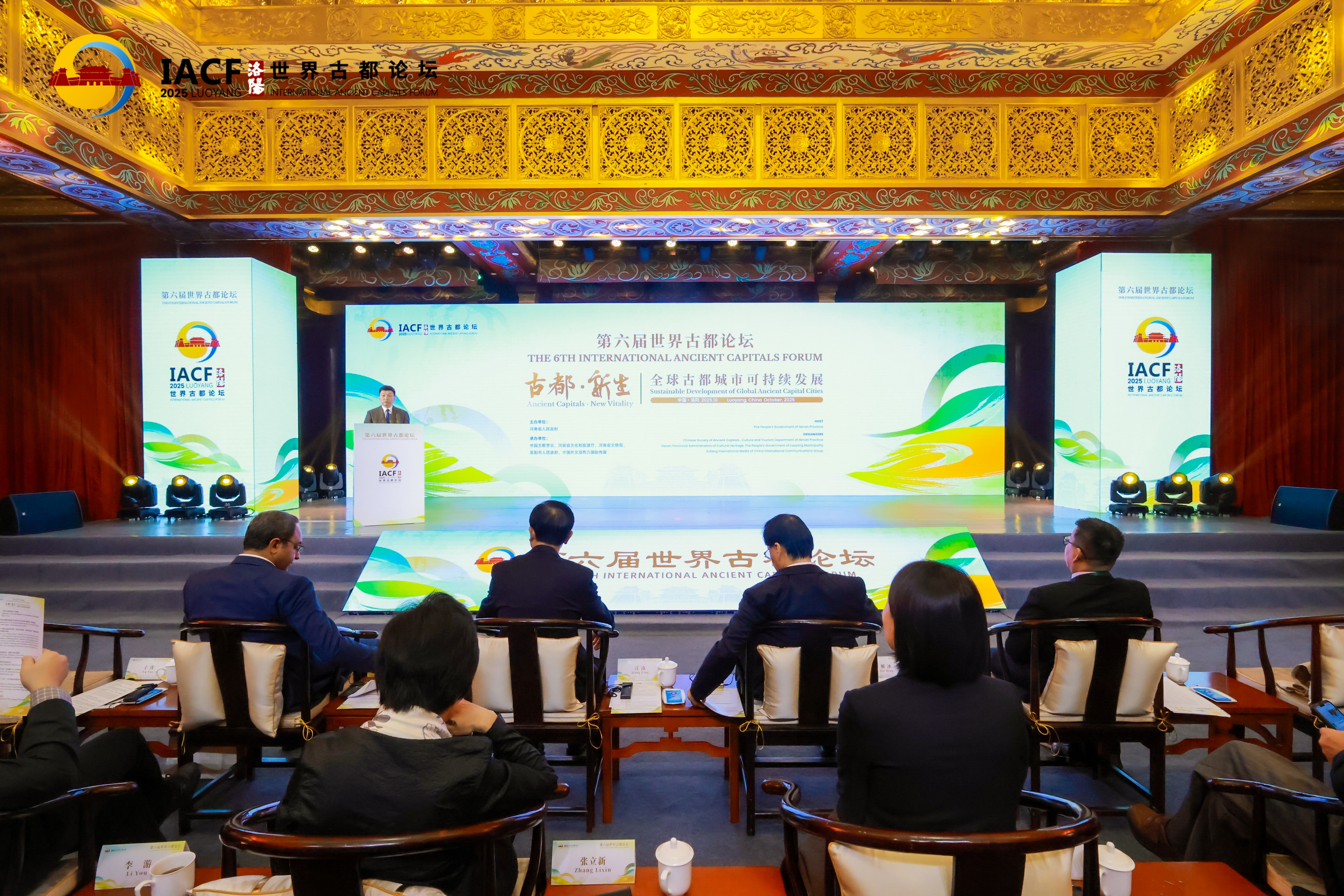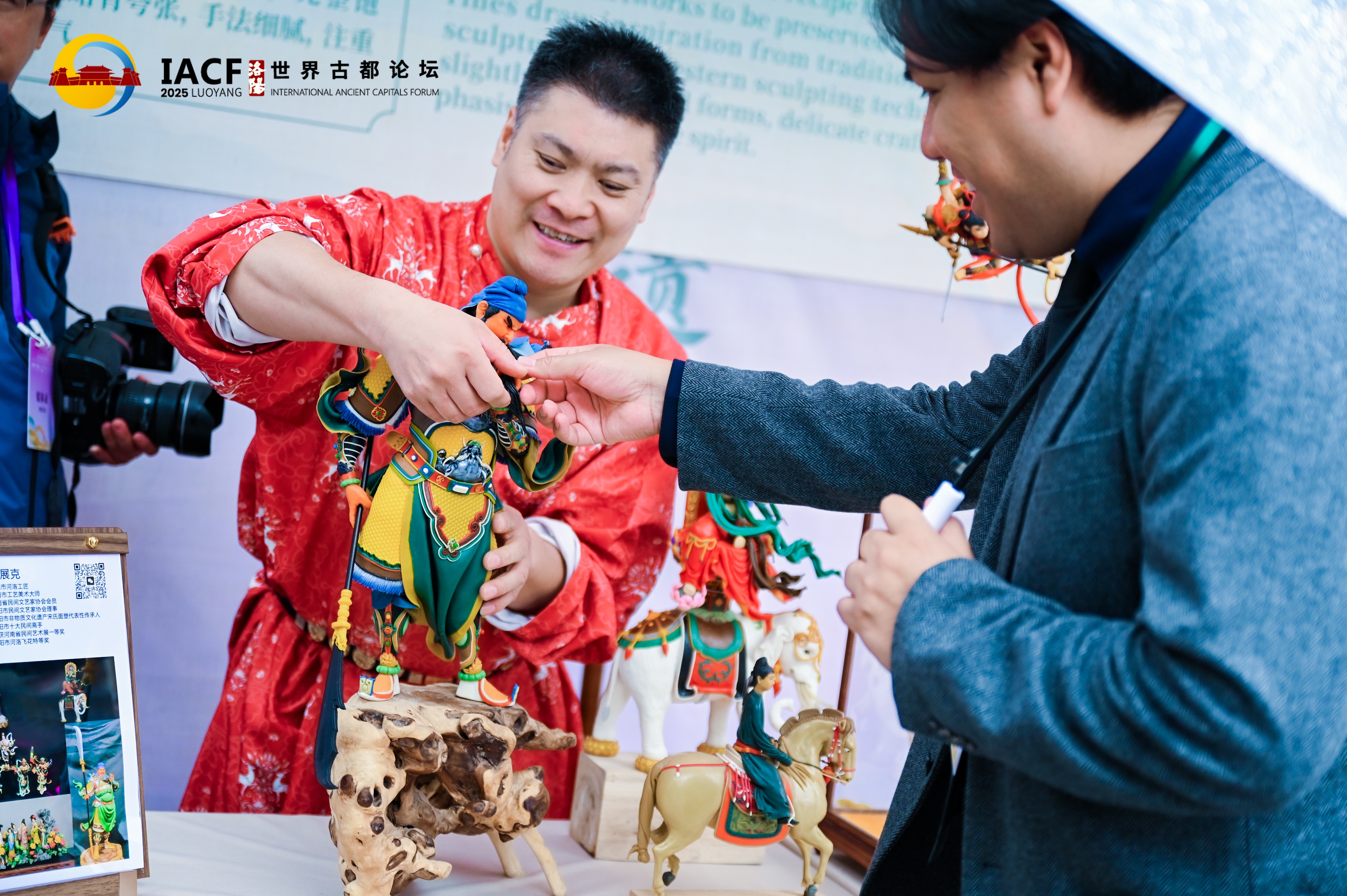Ancient Cities, Modern Vision: China’s Model for Cultural and Economic Revival

By combining culture with commerce and heritage with innovation, China is demonstrating that its ancient capitals are not relics of the past but prototypes of innovative cities for the future.
The 6th International Ancient Capitals Forum, held in Luoyang, Henan, this past week, was more than a cultural gathering. It was a strategic conversation about how history, identity, and innovation can converge to build new economic drivers for the future. Set against the backdrop of one of China’s oldest capitals, a cradle of civilization, and a cornerstone of the Silk Road, the event showcased how ancient cities can adapt to modern realities while preserving their cultural heritage.
Delegates from more than 20 countries, including Singapore, Egypt, Greece, Russia, Malaysia, Syria, and Angola, joined Chinese officials, scholars, and cultural leaders in discussing how to make ancient capitals “sustainably modern.” The forum’s theme, “Sustainable Development of Ancient Capitals,” reflected a broader trend in China’s economic and political thinking: that heritage and growth are not opposing forces, but complementary pillars of national rejuvenation.
As China accelerates its urban renewal and modernization agenda, Luoyang’s transformation offers a blueprint for how history can fuel contemporary progress. The city, once the imperial capital of 13 Chinese dynasties and a cultural center, is now positioning itself as a hub of innovation and cultural tourism, aligning with the nation’s push toward high-quality, inclusive, and green development.
Culture as a catalyst for new economic drivers
A recurring message throughout the forum was that culture is not just about nostalgia; it is a tangible economic asset. Guo Aihe, president of the China Sancai Art Research Institute and expert in Chinese porcelain and ceramic culture, highlighted Luoyang’s identity as the “capital of Sancai,” referring to its world-renowned tri-colored glazed ceramics. He described Sancai as “colorful, bright, and fluent,” a fitting metaphor for the vibrancy of Luoyang’s emerging industries. What was once an ancient craft is now part of a modern industrial ecosystem that integrates cultural heritage with design, manufacturing, and global trade.

The city’s revival of traditional crafts, museums, and cultural tourism exemplifies how intangible heritage can create real economic value. Beyond generating employment, it strengthens cultural confidence and helps project China’s soft power abroad. By rebranding its historical legacy through modern production and digital storytelling, Luoyang demonstrates how culture can evolve into an industrial advantage. In 2024, One third of total GDP of the city was contributed by industry, and 55 percent of the industrial added value was contributed by high-tech industries.
David Blair, vice president and senior economist at the Center for China and Globalization, brought an international perspective, comparing urban living standards in China with those in Western economies. He argued that China’s approach to urban development, prioritizing parks, public spaces, and elder-friendly communities, has created a model of sustainable modernity. “Someone earning 5,000 yuan a month in China,” Blair observed, “can enjoy a quality of life equivalent to someone making three or four thousand dollars in the United States.”
He further noted that, when adjusted for inflation, the United States has seen “zero real growth in living standards and median hourly wages for the working class since 1972,” underscoring how China’s inclusive urban model provides a more balanced and accessible form of prosperity. Affordable housing, efficient public services, and community-centered development have turned many of China’s historic cities into places where cultural identity enhances, rather than limits, economic vitality.
Zheng Peng, dean of the School of Management at Zhengzhou University, elaborated on how urban planning in ancient capitals must serve both economic and social purposes. Public spaces, parks, museums, and pedestrian streets generate measurable benefits by enhancing well-being, attracting investment, and bolstering local pride. As more Chinese cities integrate cultural preservation into their economic planning, they reinforce a sense of continuity that drives social cohesion and public investment confidence alike.
Building a global network of heritage-driven economies
The Luoyang forum was not just about China’s experience; it also presented global cooperation in redefining how culture contributes to sustainable growth. Xiao Jianyong, vice president of the Henan Culture Tourism Institute, presented eight new trends in the evolution of ancient capital tourism. These included immersive experiences, cultural IP creation, digital storytelling, and new business models, all enabled by technology but grounded in authenticity. “History, culture, and heritage remain unchanged,” he said, “even as new forms of expression emerge.”

This insight reflects a key advantage of China’s development approach: modernization without cultural heritage erasure. While Western urbanization often replaces the old with the new, Chinese planning increasingly integrates both, allowing cities to remain living museums of their own progress. This philosophy aligns with the broader goals of China’s “Beautiful China” and “Cultural Power” strategies, which aim to merge ecological and cultural sustainability as engines of national strength.
Professor Chye Kiang Heng from the National University of Singapore offered a complementary view. Singapore, though a relatively young city-state, has intentionally cultivated a cultural identity that connects Southeast Asia’s diverse histories. He described Singapore as a “window to the region,” a hub where travelers encounter both modern infrastructure and traditional influences. His reflections underscored the shared regional vision of linking culture, tourism, and economic development, a vision China is increasingly championing through initiatives like the Belt and Road.
The participation of representatives from Angola and other developing countries highlighted another dimension of the forum: South-South cooperation in heritage-based development. Many of these nations share similar challenges in balancing modernization with historical preservation and see China as a partner with both the experience and resources to guide their transformation. Investments in cultural infrastructure, tourism, and smart city technologies are creating new opportunities for collaboration across the Global South.
The future of investment in ancient capitals
As discussions unfolded in Luoyang, one theme became unmistakable: the future of investment in ancient capitals lies in their ability to link the past with the future. Heritage-led development is no longer limited to tourism; it now encompasses creative industries, digital culture, and sustainable infrastructure. By investing in these areas, cities attract not only visitors but innovators, investors, and talent seeking meaning and identity in a rapidly changing world.
For China, the strategy goes beyond economics. It represents a political vision rooted in stability, continuity, and confidence in national culture. Preserving historical cities and promoting their sustainable transformation reflects the country’s belief that true modernization is not about abandoning the past, but reinterpreting it for new generations.
The 6th International Ancient Capitals Forum in Luoyang thus marked a pivotal moment in how nations, developed and developing alike, reimagine their histories as engines of progress. By combining culture with commerce and heritage with innovation, China is demonstrating that its ancient capitals are not relics of the past but prototypes of innovative cities for the future.
 Facebook
Facebook
 Twitter
Twitter
 Linkedin
Linkedin
 Google +
Google +










